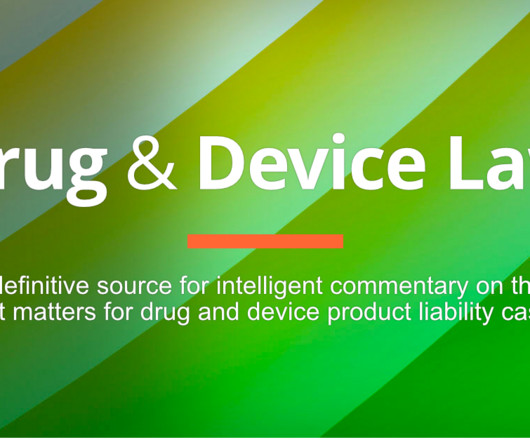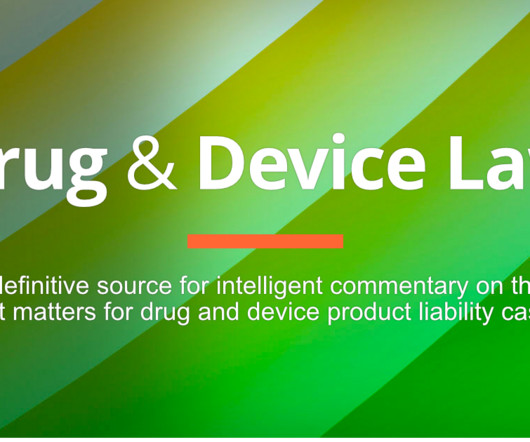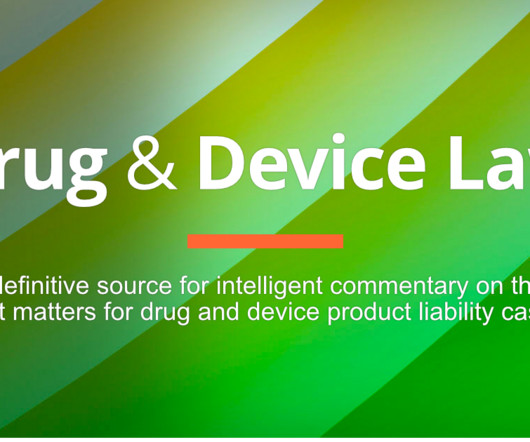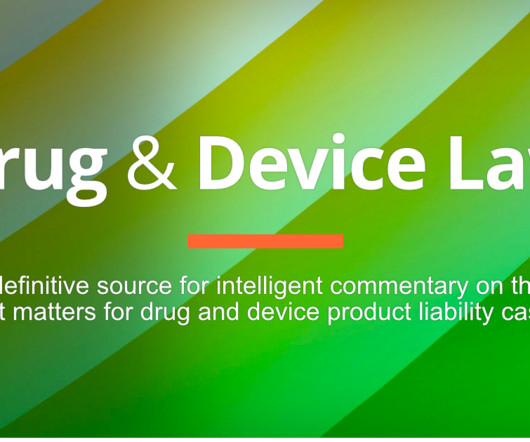Marijuana: Top Ten Reasons for Descheduling, Rescheduling or Not
FDA Law Blog: Biosimilars
FEBRUARY 11, 2024
Not surprisingly, then-presidential candidate Asa Hutchinson, DEA Administrator from 2001 to 2003, did not sign the letter. A state-regulated cannabis industry better protects consumers than the illicit market or the unregulated intoxicating hemp-derived marketplace.












Let's personalize your content